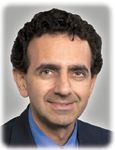Article
New stem cell sources offer hope for wider clinical use
Research led by Anthony Atala, MD, has shown that non-embryonic sources of stem cells may lead to safer, more effective clinical use.
Cell therapies offer hope for a range of clinical applications, including treatment of urologic conditions. Research led by Anthony Atala, MD, has shown that non-embryonic sources of stem cells may lead to safer, more effective clinical use. In this interview, Dr. Atala explains his group's work on these alternative cell sources, how other cells are being used clinically, and what the future holds. Dr. Atala is professor and chair of the department of urology and director of the Wake Forest Institute for Regenerative Medicine, Wake Forest University School of Medicine, Winston-Salem, NC. He serves on the scientific advisory board of Tengion Inc., which was licensed the rights to engineered bladders by Harvard Medical School, Boston. He was interviewed by Richard D. Williams, MD, professor and chairman of urology at the University of Iowa, Iowa City.
Q: You have spoken at a number of meetings about stem cells and your discovery of how they can best be used. Tell us exactly what you're doing with stem cells and what you see as the future for their use.

About 8 years ago, we started looking at an alternate source of stem cells, namely, the amniotic fluid and the placenta. We did, indeed, find a pluripotent stem cell population from these sources.
Q: Are these amniotic fluid and placental cells coming from a source other than the individual in whom you're going to use them?
A: There are actually two sources for these cells. One way is to preserve either the amniotic fluid during routine diagnostic amniocentesis or a small segment of the placenta, for example, at the time of birth, which would provide a natural repository of stem cells for a patient's lifespan. The other optional source is a bank. A bank of 100,000 specimens would be needed to provide approximately 99% of the U.S. population with a perfect genetic match for donor transplantation.





